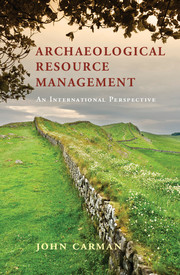7 - Presentation
from Part II - Practices
Published online by Cambridge University Press: 05 September 2015
Summary
It will be obvious that only those sites that have been preserved – whether deliberately through archaeological intervention or simply because neither humanity nor nature has caused them damage – can be offered for presentation to audiences of various kinds. It can be considered a duty of archaeologists to make their material available to others, since they claim to perform their work on behalf of those others. Not all archaeological material is, however, considered appropriate for this purpose, and this may say more about us as archaeologists than it does about the material or its potential audience, an issue to be developed throughout this chapter. The institutions through which material is made available also vary in terms of type across the world, reflecting the structure of archaeological organisation in each territory, although some types of institution, such as the museum, are represented universally. The forms that presentation can take will also vary, depending on the material itself, the institution responsible for it and its intended audience, among other factors. This chapter is titled ‘Presentation’ because that is the form of public engagement which most involves the archaeological resource itself: other forms of engagement are much more about the people involved (Carman 2002, 118–44; see also papers in World Archaeology 2002; Skeates at al. 2012; Jones 2013). To limit the concern of the chapter to matters of museum display and outreach – the major forms of presentation – will be to deny the increasing trend towards engagement and the democratisation of archaeology noted by commentators cited in Chapter 6 (especially Oliver and Clark 2001; Willems 2010; Kristiansen 2012), and on which there is a growing international literature.
The concluding chapter to Cleere's (1984a) seminal collection of papers on archaeological heritage management deriving from his overseas travels makes it clear that the educational and interpretive purposes of archaeology – the subject of this chapter – are central to the purpose of ARM, even if frequently inadequately supported (Cleere 1984c, 128–9). Interestingly, it makes less of an appearance in the One World Archaeology volume of five years later (Cleere 1989) and even less in Messenger and Smith's (2010) more recent collection. Instead, the engagement of archaeologists with others has become the topic of a separate branch of the literature, generally described as ‘public archaeology’ (Merriman 2004b; Skeates et al. 2012; Dalglish 2013) or ‘community archaeology’ (Moshenska and Dhanjal 2011) because of its focus on relations between categories of person using archaeology as the topic of discussion, rather than placing a focus on the material of archaeology itself. It can be argued, however, that the purpose of archaeology is to provide the material for debates about a range of issues, using the past to inform the present rather than limiting ourselves to a mere antiquarian interest. As previously noted in Chapters 2 and 6, Harrison and Schofield (2010, 146) take a particular view of the role of archaeology in the modern world.
- Type
- Chapter
- Information
- Archaeological Resource ManagementAn International Perspective, pp. 156 - 182Publisher: Cambridge University PressPrint publication year: 2015

